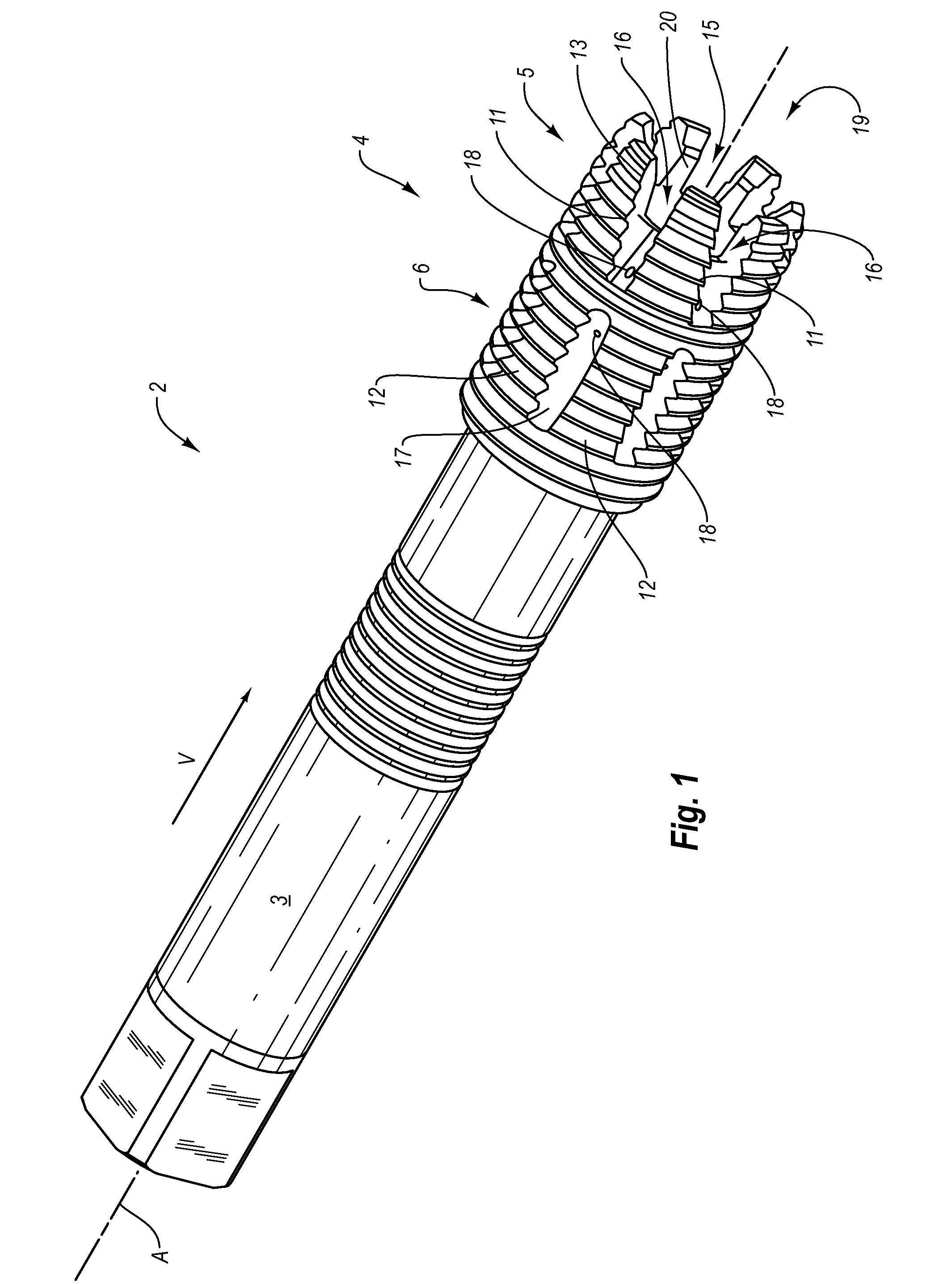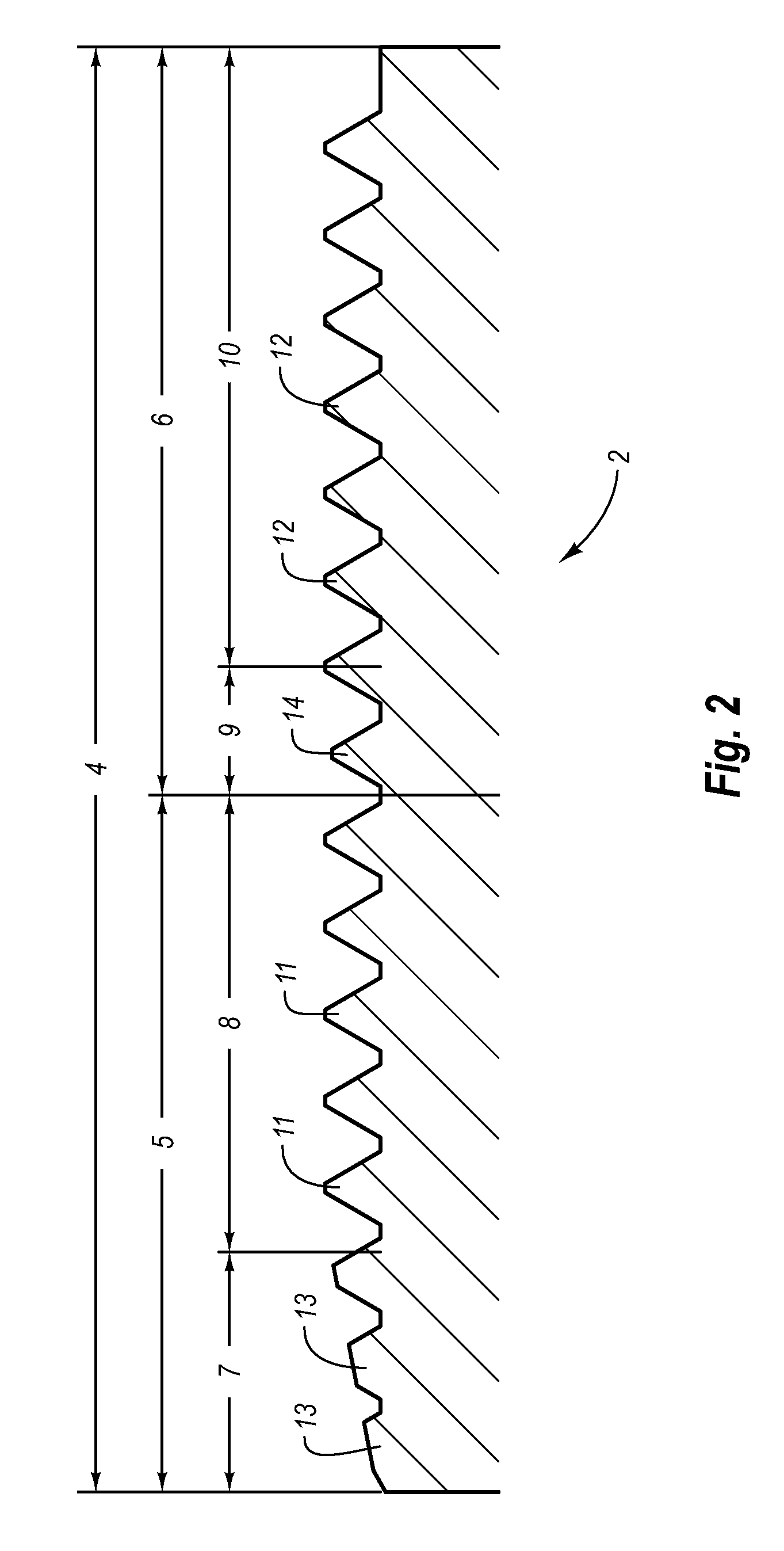Combination tool with front-face recess
a technology of front-face recesses and combinatorial tools, which is applied in the direction of drilling tools, drilling tools, boring/drilling apparatus, etc., can solve the problems of undesirable thread defects, high load and associated high wear of pressing lobes, etc., and achieve the effect of producing threads very accurately
- Summary
- Abstract
- Description
- Claims
- Application Information
AI Technical Summary
Benefits of technology
Problems solved by technology
Method used
Image
Examples
Embodiment Construction
[0050]FIG. 1 shows an exemplary embodiment of a tool 2 according to the invention in a perspective illustration, having a tool shank 3, a working head 4 arranged on the tool shank 3, a tool longitudinal axis A and an envisaged feed direction V for processing a workpiece. FIG. 2 shows, in a longitudinal section, part of the working head 4 of the tool 2 shown in FIG. 1.
[0051]The working head 4 of the tool 2 can be designed to be firmly connected to the shank 3, in particular in one piece with the shank 3. However, it is likewise possible to releasably-connect the working head 4 to the shank 3, for example by the working head 4 being designed as a detachable and thus interchangeable slip-on part.
[0052]The tool 2 is a combination tool, to be precise a thread-cutting / forming tool. The working head 4 comprises a cutting region 5, which may also be designated as cutting part, and a thread-forming region 6, which may also be designated as forming part. The cutting region 5 and the thread-fo...
PUM
| Property | Measurement | Unit |
|---|---|---|
| distance | aaaaa | aaaaa |
| area | aaaaa | aaaaa |
| length | aaaaa | aaaaa |
Abstract
Description
Claims
Application Information
 Login to View More
Login to View More - R&D
- Intellectual Property
- Life Sciences
- Materials
- Tech Scout
- Unparalleled Data Quality
- Higher Quality Content
- 60% Fewer Hallucinations
Browse by: Latest US Patents, China's latest patents, Technical Efficacy Thesaurus, Application Domain, Technology Topic, Popular Technical Reports.
© 2025 PatSnap. All rights reserved.Legal|Privacy policy|Modern Slavery Act Transparency Statement|Sitemap|About US| Contact US: help@patsnap.com



